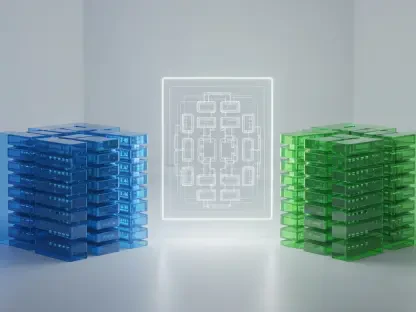In the realm of enterprise SaaS technology and innovative software solutions, Vijay Raina stands out as a thought leader in design and architecture. Today, he shares his insights on automating sentiment analysis using Snowflake Cortex, a simplified approach that eliminates the need for complex machine learning infrastructures.
What is the main objective of the tutorial on automating sentiment analysis using Snowflake Cortex?
The main goal of the tutorial is to guide users through automating the process of sentiment analysis and categorizing customer feedback using Snowflake Cortex. This involves leveraging a simple SQL query to analyze sentiment without the complexity of traditional machine learning algorithms. The tutorial walks users from loading sample feedback data into a Snowflake table up to automating data processing for generating actionable insights.
Why is Snowflake Cortex used for sentiment analysis instead of building complex machine learning algorithms?
Snowflake Cortex offers a streamlined approach for sentiment analysis by using built-in, large language model-powered functions. This means users can achieve accurate classifications without the extensive overhead of developing and maintaining machine learning models, making it much more accessible for those with limited resources or technical expertise in machine learning.
What kind of sample data is used in this tutorial for sentiment analysis?
The tutorial uses a sample dataset that simulates customer feedback comments from “DemoMart,” a fictional company. This data encompasses various aspects, such as products, delivery, and customer support, providing a comprehensive foundation for practicing sentiment analysis.
What are the prerequisites for following this tutorial?
To follow the tutorial, you’ll need a Snowflake account with access to Cortex, as well as the necessary role privileges to create tables, tasks, and procedures. Basic SQL knowledge is also required to execute the steps and understand the operations involved effectively.
What steps are outlined to achieve automated sentiment analysis in the tutorial?
The tutorial outlines several key steps: creating a table to store customer feedback, using the Cortex function to classify sentiment and categories, storing results in a separate table for analysis, performing an initial bulk classification, and finally setting up automated, incremental processing for new feedback using Snowflake Task.
How do you create a sample feedback table in Snowflake?
You start by executing a simple SQL command within Snowflake to create a table designed to hold various feedback entries. The structure accounts for different data fields that will store customer comments and allow processing through Snowflake Cortex.
Where can you find the sample data file “customer_feedback_demomart.csv” to load into Snowflake?
The sample data file is available for download from a GitHub repository. This resource contains all necessary files so users can easily load data into their Snowflake environment via Snowsight.
What function does Snowflake Cortex offer to classify sentiment and categorize feedback?
Snowflake Cortex provides the CLASSIFY_TEXT function, which uses large language models to determine sentiment—be it positive, negative, or neutral—and assigns feedback to specific categories like ‘Product’, ‘Customer Service’, or ‘Delivery’.
How are feedback comments categorized in the tutorial, and can these categories be adjusted?
Comments are categorized based on predefined labels that relate to different aspects of a business, such as customer service or product feedback. Yes, these categories are adjustable and can be tailored to fit the specific needs or structure of any business using the system.
What is the purpose of storing classified results in a separate table?
Classified results are stored in a separate table for easier reporting and analysis. This allows users to access structured data that can be readily used for generating insights and identifying trends without interfering with the raw feedback data.
Describe the initial bulk load process mentioned in the tutorial.
The initial bulk load involves processing all existing feedback data to classify and store it in the newly created table. This ensures that historical data is included in the analysis, providing a comprehensive foundation for understanding sentiment trends over time.
How do you set up incremental data processing for new feedback entries in Snowflake?
Incremental data processing is set up by writing an SQL query that identifies new feedback entries based on a timestamp column. These entries are then processed through the same sentiment classification function to keep the analysis updated with fresh data.
What is the role of Snowflake Task in automating the classification of new data?
Snowflake Task is responsible for automating the process of identifying and classifying new data entries. By scheduling the task to run regularly, such as weekly, it ensures that any newly arrived customer feedback is analyzed without manual intervention.
Explain how the automated task for processing new feedback is scheduled.
The automated task is scheduled to run every Sunday at midnight UTC. This routine processing helps maintain up-to-date classifications, ensuring that teams have access to the latest customer sentiment data without needing to manually refresh the analysis.
How can users visualize insights from the classified feedback data?
Users can build dashboards using Snowsight, Snowflake’s visualization tool, to explore trends and insights generated from the classified feedback data. These visualizations can help identify patterns in customer sentiment and drive data-informed decisions.
What benefits does this automated sentiment analysis approach offer to support and product teams?
This approach offers several advantages—it enables continuous monitoring of customer feedback without the need for resource-intensive ML infrastructures. Support and product teams can quickly adapt to changing customer sentiments, respond to issues, and improve the overall customer experience.
Where can you access the code and sample data for this tutorial?
The complete set of code and sample data is available on a publicly accessible GitHub page. This open resource allows anyone interested in replicating or adapting the tutorial for their own needs to download the necessary scripts.
Who are the primary users or team members that would benefit from this automated sentiment analysis process?
This process offers significant value to support teams, product managers, and leadership. By continuously monitoring the customer experience, these teams can implement proactive changes to improve satisfaction and align products with customer expectations.
Do you have any advice for our readers?
When automating analysis processes, it’s crucial to keep iterating and refining your approach. Start with predefined categories and insights, then refine them based on real business needs and user feedback. Remember, the goal is not just to automate but to derive meaningful insights that can transform customer experiences.









